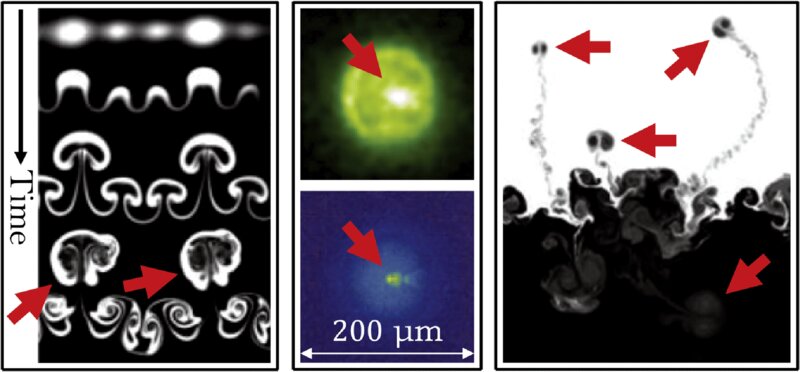Researchers at the University of Michigan have developed a model that could help nuclear fusion researchers compress fuel more efficiently. This could aid in the design of the fuel capsule, minimizing energy loss while trying to ignite the reaction that makes stars shine. The researchers have also shown that understanding the formation of swirling, ring-shaped disturbances, known as vortex rings, could help physicists understand supernovae and bring humanity one step closer to capturing the power of nuclear fusion as an energy source.
Vortex Rings and Nuclear Fusion
Nuclear fusion is the process of pushing atoms together until they merge, releasing several times more energy than breaking atoms apart, or fission. However, at present, much of the energy used in the process is wasted. The fuel cannot be compressed neatly, and instabilities cause the formation of jets that penetrate into the hotspot, with the fuel spurting out between them. The researchers have compared it to trying to squish an orange with your hands, where juice would leak out between your fingers.
The researchers have shown that vortex rings that form at the leading edge of these jets are mathematically similar to smoke rings, the eddies behind jellyfish, and the plasma rings that fly off the surface of a supernova. These vortex rings move outward from the collapsing star, populating the universe with the materials that will eventually become nebulae, planets, and even new stars—and inward during fusion implosions, disrupting the stability of the burning fusion fuel and reducing the efficiency of the reaction.
Perhaps the most famous approach to fusion is a spherical array of lasers all pointing toward a spherical capsule of fuel. The energy from the lasers vaporizes the layer of material around the fuel, driving the fuel inward as the carbon atoms fly outward. When that shell vaporizes, it generates a shockwave, which pushes the fuel so hard that the hydrogen fuses.
Each spherical fuel pellet has a deliberate flaw: a fill tube where the fuel enters. Like a straw stuck in a crushed orange, this is the most likely place for a vortex-ring-led jet to form when the compression starts. The researchers explain that fusion experiments happen so fast that they only need to delay the formation of the jet for a few nanoseconds.
Vortex Rings and Other Applications
The model developed by the researchers can also help other engineers who must manage the mixing of fluids after a shock wave passes through, such as those designing supersonic jet engines. Additionally, the model could aid physicists trying to understand supernovae, as vortex rings could help drive the mixing between heavy and lighter elements when stars explode.
The team is validating the vortex ring model with experiments. The model can also help researchers understand the limits of the energy that a vortex ring can carry and how much fluid can be pushed before the flow becomes turbulent and harder to model as a result.
Understanding vortex rings’ formation can help scientists understand some of the most extreme events in the universe and bring humanity one step closer to capturing the power of nuclear fusion as an energy source. The researchers’ model can aid in the design of the fuel capsule, minimize energy loss, and help other engineers manage fluid mixing.



Leave a Reply